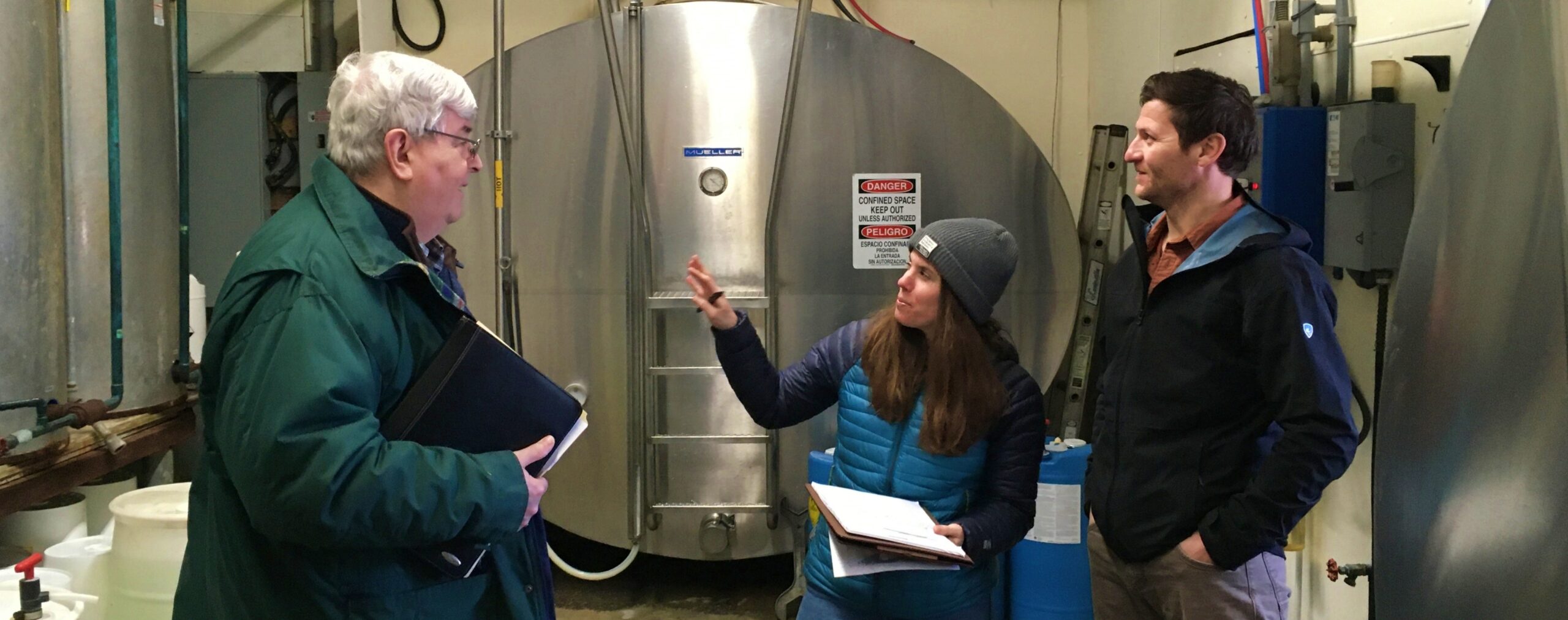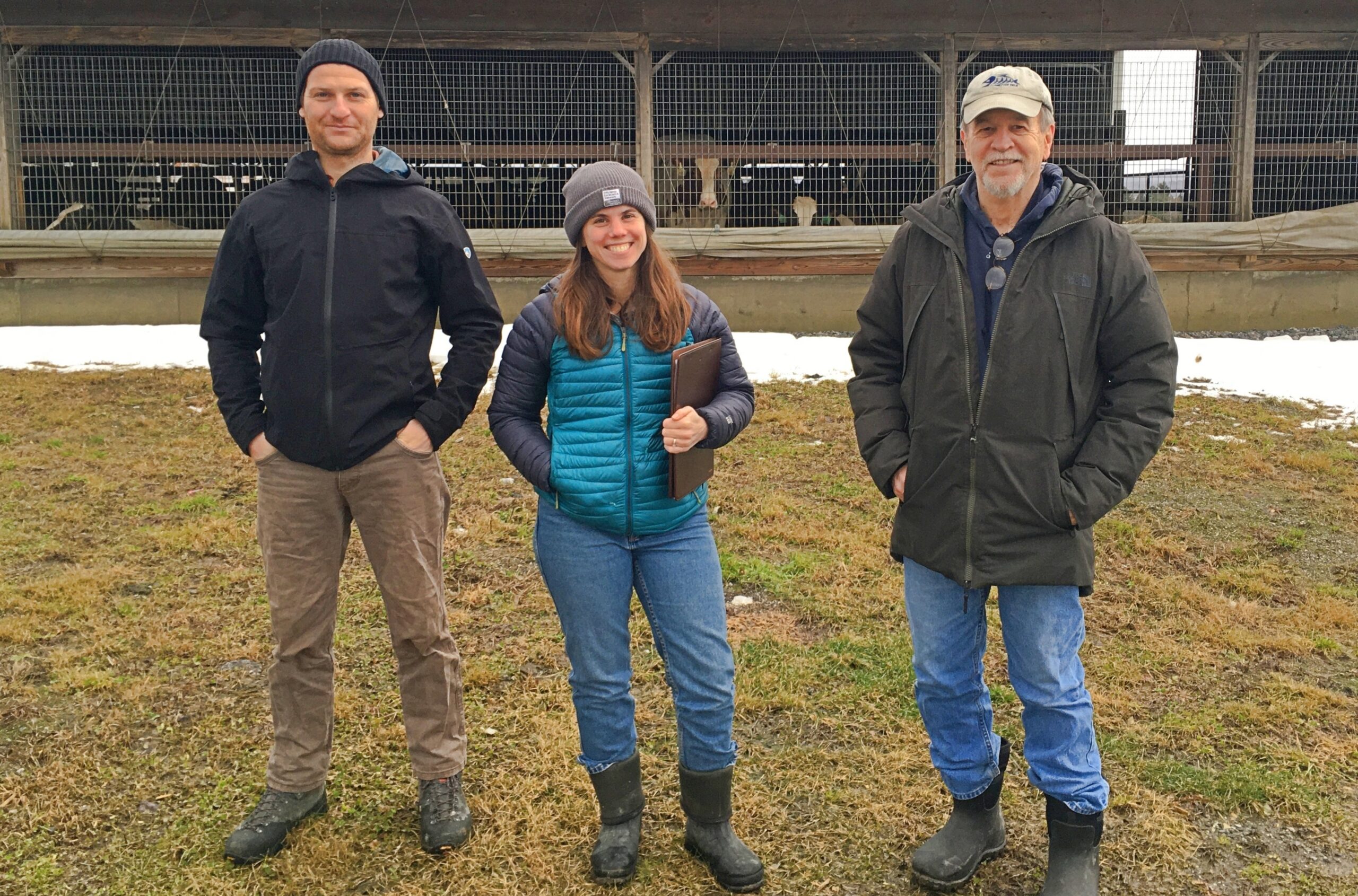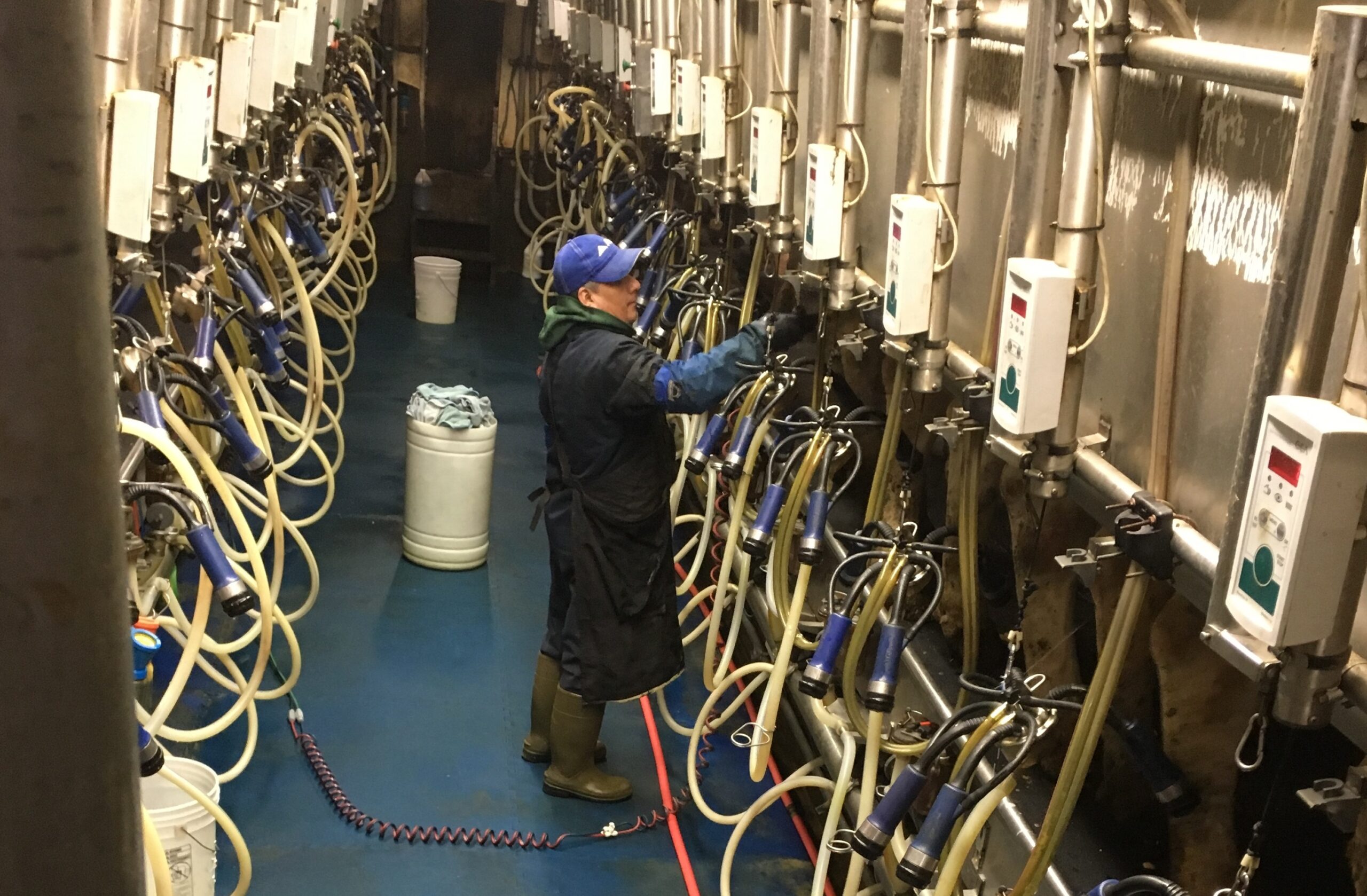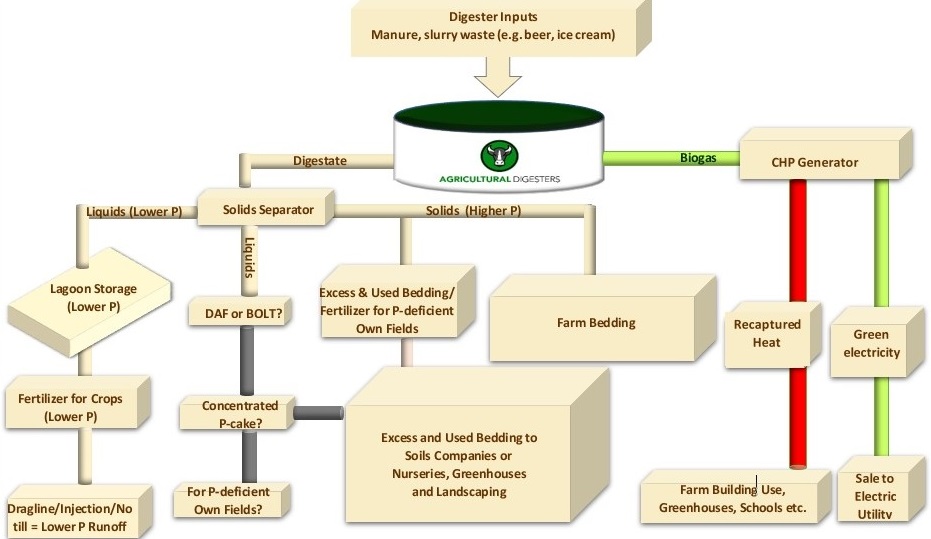
Efficiency Vermont identifies ways to reduce fossil fuel usage, while cutting costs, at Bullis farm in Grand Isle. Specifically, the opportunity to replace a large percentage of the propane used to heat hot water with excess heat from the generator.
The generator set that powers our digesters is called a CHP which stands for Combined Heat and Power. The “power” is electricity which is delivered directly to the grid via lines to the street. But what about the heat? It is always used to warm the digester tank which needs to remain at approximately 100 degrees for maximum biogas production, but that may be just 20% of the total.
At some existing digesters the remainder is an afterthought because utilizing it would require time and money to lay the piping necessary to deliver it for additional use. Instead, it is simply released to the atmosphere.
This is where Efficiency Vermont comes in.
A digester replaces the electricity created by fossil fuels and heat from the oil, propane, and natural gas that contribute to global warming. Rather than wasting this renewable heat source, Efficiency Vermont helps facilitate the piping of generator heat to various farm site structures and equipment. This can include the milking parlor, barn offices, and tool shop. Not only that, but residences located near the farm can also utilize this “free heat.” The heat from the digester’s generator offsets much of the farm’s heating costs, something warmly welcomed during Vermont winters!

Jim Muir (Agricultural Digesters), Rose Wall and Corey O’Connell (Efficiency Vermont) study current heat sources at one of our Sheldon farms.

Efficiency Vermont and John Forcier our engineering consultant, review location of the Bullis digester components including the CHP generator.

Corey, Rose and Jim at our farm located on the Sheldon/Franklin town line.

Milking parlor at the Bullis Farm will be heated in the future by its digester.

A diagram showing both the electricity and heat (in red) produced by the MAN CHP.

